Have you come across an occupation in a census record that you’ve never heard of before? Many of our ancestors held jobs that are rare or no longer exist today. We’ve scoured our archives to learn more about those jobs and what our ancestors did to earn a living. Here are a few of the occupations we found:
AArtificial Flower Maker: This intricate job required long hours and a lot of skill. The detailed artificial flowers embellished bonnets, dresses, and hats.
BBath Attendant: In the early 20th century, school children in cities like New York and Chicago were bathed at school. Often the children came from tenements with no access to washing facilities. This 1909 article invited women to apply for the position and described the qualifications needed to become a bath attendant.
CCorset Factory Worker: Factories became common during the Industrial Revolution. In this 1910 help wanted ad, a corset factory was hiring women between the ages of 16-40 to work in the factory.
DDaguerreotypist: A daguerreotypist was an early photographer who used a now-obsolete process to create images on a silvered copper surface. In this 1846 article, a traveling daguerreotypist offered to create miniature likenesses in Joliet, Illinois.
EEsquire: Today the term esquire describes a lawyer, but that wasn’t always the case. If your 19th-century ancestor was an esquire, it meant that he held a title of office, such as a lawyer, sheriff, justice of the peace, etc.
FFellmongers: A fellmonger is a person who removes hair or wool from hides in preparation for making leather.
GGlazier: A glazier cut, installed, and removed glass in windows, display cases, and more.
HHokey-Pokey Man: The Hokey-Pokey man was a vendor with a pushcart that sold cheap, low-quality ice cream in the late 1800s through early 1900s. The Hokey-Pokey man was popular with children in tenement neighborhoods. In this 1910 article, a San Francisco Hokey-Pokey man found out he would likely inherit a fortune.
IIce Cutter: Before refrigeration was invented, ice cutters went to lakes and rivers during the winter and cut out blocks of ice for use in the summer. Workers transported ice to ice houses where it was kept cold with straw or sawdust. It would stay frozen for many months.
JJapanner: Japanned leather was a process to coat leather with a Japanese varnish and then dry it on a stove, producing a smooth, shiny surface like patent leather.
KKnocker-Upper: A knocker-upper was the equivalent of a human alarm clock. They roamed the streets with a tall wand used to tap on windows to awaken workers in the morning.
LLeech Collector: Leech collectors, often women, gathered leeches for medicinal use. Doctors believed that bloodletting could cure disease, so leeches were placed on patients to suck infected blood out. The practice was especially popular in Europe.
MMillwright: A millwright was responsible for designing, installing, maintaining, and repairing mill machinery. This 1902 article reported on a labor dispute when millwrights demanded an eight-hour workday, but employers wanted ten.
NNeedle-Pointer: A needle pointer was a person who filed the points of needles. According to this 1822 article, breathing in steel dust caused health problems for needle-pointers, forcing most to end their careers by the age of 35.
OOrdinary Keeper: An Ordinary Keeper was an innkeeper. The terms “ordinary” and “tavern” used to be used interchangeably. Early records from Maine cautioned Ordinary Keepers about serving too much liquor.
PPinsetter: Bowling became popular in the 20th century and before automated pinsetters were invented, workers handset the bowling pins each time they were knocked down. This 1943 article describes how a pinsetter might set 132 games a night and be paid 9 cents a game.
QQuarrier: A quarrier was a quarry worker.
RRag Man: A rag man walked the streets with a cart, collecting old rags and other discarded items. He then brought them to a junk shop where they were resold. This 1894 article describes the job of a rag men and gives a detailed description of a junk shop.
SSaddler: A saddler was in charge of making, repairing, and selling saddles. This 1872 article describes what a saddler’s shop might have looked like.
TTeamster: A teamster drove a team of oxen, horses, or mules, pulling a wagon. A man who drove a team of oxen was called a bullwhacker. Teamsters transported cargo and supplies. This 1875 article described the duties of a teamster.
UUptwister: An uptwister was a textile industry worker that was in charge of winding yarn onto a revolving spindle.
VVitner: A vitner is a wine merchant. This 1859 article talks about the South Carolina grape industry and the oldest vitner in the South.
WWhitesmith: A whitesmith works with metals like tin, copper, and brass.
XXylographer: A xylographer is a person who makes engravings on wood, especially for printing.
YYeoman: A yeoman was a farmer that owned his land.
ZZincographer: A zincographer worked in the printing industry etching images on zinc plates. The line drawings used in newspapers before photography (like this 1893 example), were created by zincographers.


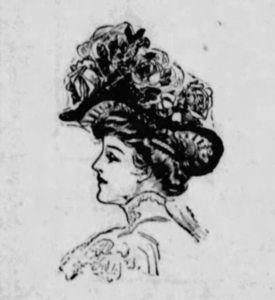
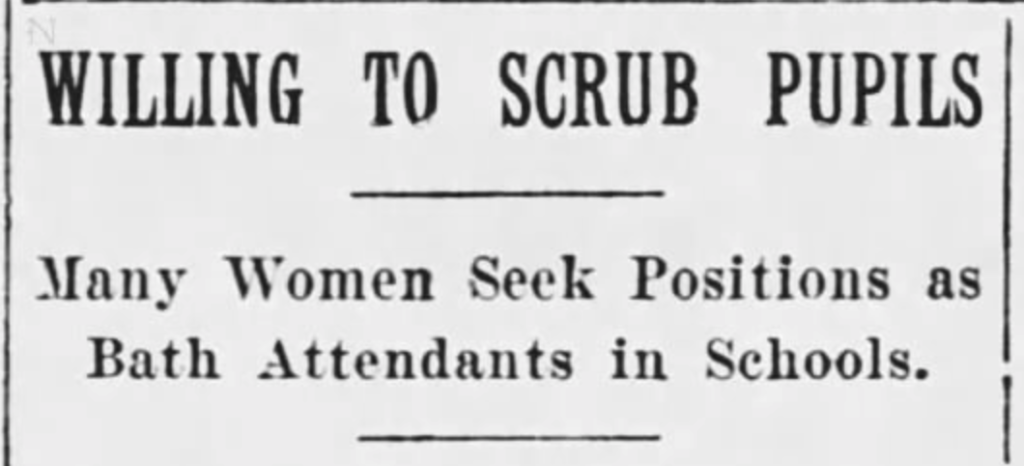
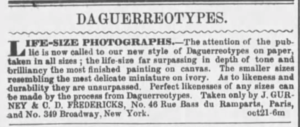

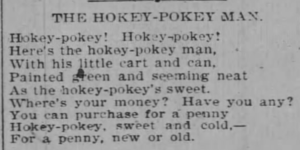

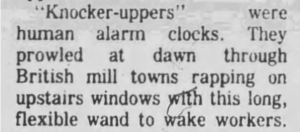

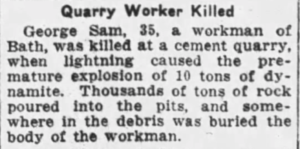
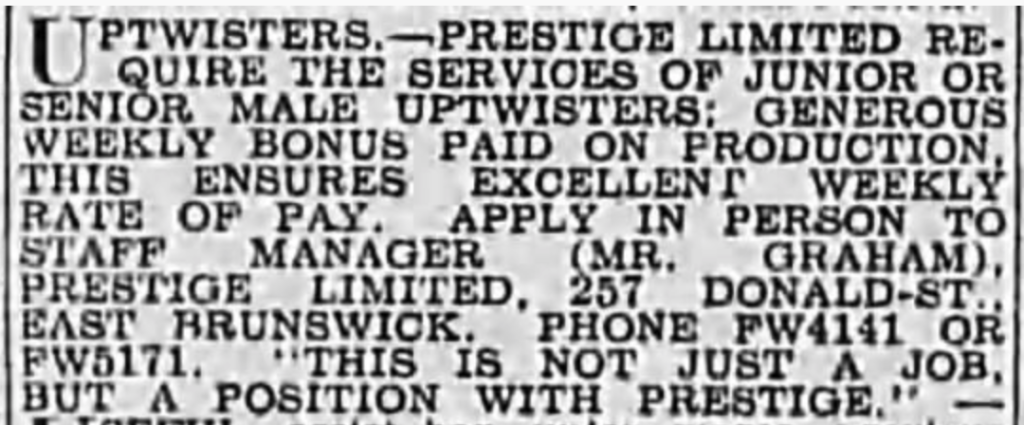
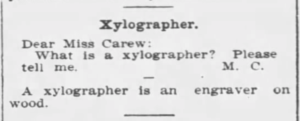
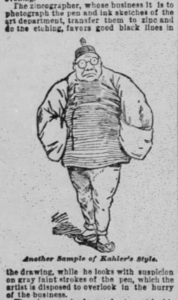
Thank you!!! Interesting!!
After tracking and learning how robot AIs work I am fully convinced this site (and many comments) are AI scripted to keep this site ‘active’ when in fact it’s not.
Nobody wants just 2021 files for newspapers.
Troll
He who is ignorant of history, is doomed to repeat it.
Newspapers.com is an invaluable source of historical data.
My paternal grandfather was a Paper Hanger. He was very successful and this was his trade for most of his life. He immigrated to the USA from Barbados , West Indies.
“paper hanger” was also a term for people who passed bad checks ; )
No offense to your grandad, but you do mean a wall paper hanger? The reason I ask is in large urban areas “ paper hanger” had a different connotation – (counterfeiting)
My dad was a paperhanger after WWII. He was the guy who climbed tall ladders to paste ads on billboards.
A Paper Hanger applied wall paper, a Bill Poster pasted paper signs on walls and flat surfaces (billboards) made for that purpose. Bill comes from a Playbill or advertisement for a performance.
Well a large % of my ancestors were farmers and most owned their land so I suppose you could call them yeomen although I doubt that term was much used in New England. Farmers could hold other positions as well. . I have one who was a wheelwright.
Among my forerunners I count ministers, missionaries, and teachers who also did a bit of farming as well when circumstances allowed. . Also women who were missionaries and teachers.
It’s interesting that in the US Navy a “yeoman” was a secretary.
Another definition of a yeoman is “a servant in a royal or noble household, ranking between a sergeant and a groom or a squire and a page”. That’s older even than the sense of the Naval use or the farmer who owned his own land.
Any genealogist knows what a “Yeoman” is!
Fascinating list, many of which were unfamiliar to me even though I’m a history buff. Much opportunity for discussion. Thanks for the extra notes.
Rude Brothers Manufacturing Company
Liberty, Indiana
Farm Implements 1880
Rude
Amongst my ancestors I’ve run across a Dryer and a Copper. Hope they paid well but I doubt it.
A barrel maker was a cooper, not copper.
My husband worked as a cooper as a teenager for the vinegar company his dad managed. He was offered an hour wage and he asked to get paid per barrell. He increased his income that way considerly. This was in the early 1950’s.
Terry: Don’t think it was an ancestor but the oddest occupation I have seen was a “cantering crimper” in the London phone book. This was explained to me as someone who would come to your home to give hairdos or perms.
I wood think a crimper would deal with metal not hair. Maybe fencing.
A hair crimper was a primitive curling iron. It was iron tongs with thick handles that opened with one side having 1-3 barrels and an iron plate on the other that had the number of crimps as barrels. The barrel end was heated in a stove or lamp – preferably the handles were hardwood for safety and comfort or they were wrapped in towels. Sections of hair were pressed between the barrels and plate to create waves. Attention was needed to protect the hair with moisturizing products and to know how long to heat the crimper and leave it on the hair for best results without burning the hair. The daughter Margo in the show Durells in Corfu uses one on a lady – I am not sure if it is in the original book, but both are about a British family in the 1930s.
In the 1990s, one of my friends still had her hair straightened monthly by her mother with a metal comb that was heated in the stove and combed in her hair that was prepped with special moisturizers. Other African American girls at school have their hair straightened at salons or home with chemical “permanents” – similar to the “permanent” chemicals used on rollers to curl straight hair. The hot iron comb was less damaging to hair if done by an experienced person.
A Copper is a Barrel maker for Wine, Beer, or
to hold flour or rice, corn meal etc.
My ancestors from Portugal were Coppers.
I think you mean a ‘cooper’ working in a ‘cooperage’.
Barrel maker’s were called Coopers. Copper is a slang term for police officer. My 5th great grandfather who immigrated from Ireland in the early 1700s was a Cooper.
Great article, keep them coming. My paternal great grandfather worked as a fireman, not the one who put out fires, but kept the fires going to provide heat and power in the mill that he worked. Also know as a stoker. He listed his occupation on the census as fireman. Great
My grandfather used to run moonshine in a hearse.
Wow that must bring some great stories
Very interesting
My grandfather was an opener at a tin mill. Opener of what,I do not know.
Could you call him a tin opener – you were waiting for someone to say it 🙂
“Wet” coopers made barrels that would hold liquids and got more for their labor. “Dry” coopers made barrels that held flour or grain, etc. and got less for their barrels. There were also smaller or larger barrels in trade.
Oh I love this. Of course, it makes sense that its more difficult to make a barrell that holds liquids.
My relative’s we’re watermen on the Thames river.
Alfred – Mine as well! I still have my great-great-grandfather’s apprenticeship papers as a boatwright for a barge builder.
My neighbour won a Doggett’s coat and badge. Did your relatives enter the yearly competition?
Very interesting article.
My dad’s uncle was listed as a “call boy”.
They worked in Asheville cotton mills. When I enquirer on genealogy site what kind of job it could be all the answers were vulgar.
So I still don’t know what the job was.
A “call boy” was a young man who did odd jobs for the management. Mostly conveying messages and fetching coffee. Telephones and child labor laws mostly ended the practice.
So kinda like the Phillip Morris boy – if you’re old enough to remember that commercial? I was wondering if that’s what it might have been.
Thank you for reply.
Interesting feed. Learning lots of neat info.
I believe the boy in the Phillip Morris commercials was a hotel Page Boy. Their job was to deliver messages or “page” hotel residents in public areas by calling their names out loud.
Sounds like a secretary! I did a lot of messaging and fetching coffee!
What about patternmakers? My grandfather was one and my dad trained as one at a vocational high school. They were skilled woodworkers who made wooden models of machinery parts (to check measurements, function, then to be used as a form so the metal parts could be cast.
Thanks I had a great great uncle that did that too! I was thinking clothes!
My grandfather was a patternmaker for the railroads. I have some of the wood pieces he made for casting the metal parts. He educated himself through the International Correspondence School in the late 1800’s
What a wonderful man. I didn’t know about that school in those days
A true American, working his way up!
ViNtner, not vit-ner
Elizabeth, you’re absolutely correct! However the clipping attached and other papers from the same era spelled it Vitner. Perhaps the spelling changed over time? Good catch though!
Ha! Forty years of secretarial work… proofreading!
Census records are notorious for misspelled words.
And misspelling names too Ive found
Too
Linotype operator — back in the early days of newspapering, type, made of lead, was set by Linotypes, machines that looked as if they were invented by Rube Goldberg. Too complicated to explain here.
My Great Grandfather was a cobbler from Germany! He made shoes
I guess Blacksmiths only used iron?
Whitesmith refers to people who worked in tin and other base metals. The ones who worked in tin later became called tinsmiths. One of my ancestors was a whitesmith, and several were blacksmiths.
My great grandfather’s 1893 obituary stated his occupation was ‘car driver,’ but autos didn’t come into common use until the turn of the century. Does the term refer to trolley cars?
Yes! Either horse-drawn or early electric streetcars.
I had a relative who was a “chauffeur” for a lumber company. Today we would call him a truck driver.
My grandfather was a “motorman” on a trolley. I guess it was an electric one. I don’t remember seeing any horses.
In his early twenties, my dad was a window dresser. He set up the displays in the department store windows.
Interesting. My uncle was a set dresser for a TV station in Detroit, MI. He decorated sets for live TV shows. He also made a very good living doing that. He retired in the 1990s.
One of my ancestors was listed in the census as a varnisher. I assume it is one who varnishes wood or other material
My families restaurant had a fry cook. They put fries into the hot oil and manned the grill. Men only.
I remember making artificial flowers for my friends. We used them in our hair. I once made them for a bridal affair for the bride to practice with. Great memories
My favourite occupation is that of ‘Saggarmaker’s bottom knocker’
Saggars are used to hold and protect pottery during kiln-firing, and by placing various substances in a saggar it is possible to produce dramatic visual effects on the finished pottery.
Producing saggars to the correct specifications required was a skilled job and needed a craftsman – the saggar maker. However, making the bases of the saggars was a less skilled job which could be left to a lesser craftsman, namely the saggar maker’s bottom knocker, who made the bottom of the saggar by placing clay in a metal hoop and literally knocking it into shape.
Fascinating!
If you are ever in Longton Stoke on Trent visit the Gladstone Pottery and see the conditions the Saggars and their Bottom Knockers worked in, so glad the Potteries get a mention not the most glamorous of UK Cities
Indeed a wonderful word &info
Facinating! Thanks.
What is a druller? In England in early 1600’s, perhaps in the woolen trade an early ancestor of mine was a druller.
Two occupations that belong here: hod carrier and gandy dancer. A hod carrier carried bricks to keep brick layers supplied as they worked. A gandy dancer was an itinerant railroad worker.
My info on Gandy Dancer is they were a team of people (mostly blacks) who worked together to make the rails straight. They had an instrument they would put between the rails and then all together push them straight. If that makes sense. My grandfather and both great-grandfathers were railroad workers but not gandy dancers. I heard that they had call songs to keep together; one man in the South then started using them (or versions) in the Army.
Gandy dancer is slang term for “section hands” laying and maintaining railroad tracks, particularly on the built-up earthen beds – railroad work that has now been replaced by machines. The “gandy” was a slang term for the 5ft rail the section hands tamped down the earth with between the rails. How they moved together in time was the dance. While in the Deep South most section crewman were African American, section crews were made up of people who would take the low wage with hard work conditions. Chinese immigrants are an integral part of developing the West. Along the southern border, Latino and Mexican immigrants section crews were called traquero (track-men.) Italian and Irish immigrants were common in section crews in Pennsylvania and the Northeast. And some women even worked in section crews during the labor shortages of WWII.
My 5th Great Grandfather is listed on the 1790 Census as a Tatter of Lace. He came to the Colonies in 1750 from Belfast.
What was a “switzer” please? It was a German word. My ancester was this in Charleston SC…husband was a basket maker.
In English, a switzer is a mercenary soldier from Switzerland or a Swiss person. However, I do not know if they used the same term in Germany and I thought the term was Reisläufer.
Swiss mercenaries (hired rather than conscripted or citizenship-based) soldiers for foreign armies became well-known in the Renaissance and we see the last remaining with the Swiss Guard of the Vatican.
Reading all the different occupations mentioned above is a real eye opener. Some of the jobs mentioned I never heard of and very interesting in finding out what they meant.
It is very important to understand what are ancestors had to do to be able to survive and I am sure that are more occupations that were not mentioned above.
Thank you for all who have included what their ancestors did to survive.
Very interesting article…
Some occupations were difficult for the censuses to capture – simply because they were illegal. How, for example, was the poor enumerator to determine if a female (or male for that matter) was a sex worker? If they in jail or police lock up the enumerator could simply write in ‘prostitute’ but if not in custody it was unlikely that the respondent would volunteer such information. A number of euphemisms for female sex worker can be found in the British Censuses. One used in parts of London was ‘unfortunate’ – as an occupation! In the Fulham Workhouse in 1851, out of around 150 female inmates there were no ‘prostitutes’ but over thirty ‘garden women’. I have not seen this term used anywhere else but believe it refers delicately to selling sex.
I know it’s weird replying to my own post – but I think I am wrong about ‘garden woman’. There were, I have discovered, so many in West London such as Kensington and Hammersmith where many of London’s parks and public gardens are and were in 1851, and they are mainly of such an age (in their forties) that it seems more likely that they literally worked in gardens.
Outside of Central London many areas were market gardens supplying fruit and vegetables to the city. I wonder if the garden women were working the market gardens?
My great great great grandfather in London began his career in the London Docks Customs Department as a Tide Waiter about 1840. Tidewaiters literally waited for the ships to come in with the tide and then they would board the ships to ensure the cargo was not smuggled off before the Excise Officers arrived to tax the shipment.
My great Grandfather worked with a traveling carnival. He Had a booth and produced a cool treat for the people there: crushed ice coated with fruit syrup
My ancestor was a Lime Burner in the US – I can’t remember where but probably Ohio.
My great-grandfather’s occupation is listed as “Haculater” in 1870 census. Unknown what that is. He worked in mining and passenger stage coach in California gold country. Any suggestions?
My ancestor, in the 1760’s was referred to as a cordwainer in Haverhill, Massachusetts. A cordwainer was an inspector of leather. I doubt that there is such a position today.
A cordwainer was a shoemaker, according to http://www.worldthroughthelens.com/family-history/old-occupations.php
which is a fascinating list of hundreds of old time occupations.
Cordwainer was a common term for shoe maker.
My great granfather was an Ostler, whatever that was.
someone who takes care of horses
Some who takes care of the horses at an inn.
My mother was a colorizer. She colored black and white photos using colored pencils to make them color photos before there was color photography.
My great grandmother colorized pictures by painting them. Our family has a few of her works that were photos my grandfather took of my aunts
My great great grandfather had “tar roffer” as his occupation on the census. Any takers?
Probably a “tar roofer”
Hot tar, spreat on roof to waterproof it??
Up until the time I retired last year, I made powder horns for muzzleloading firearms. A powder horn is an item that contains black powder, of which a measured charge is dropped down the barrel of the gun, as part of the loading process.
A person who makes powder horns or anything out of horn is called a horner.
Interesting that I made a living for over 30 years. I estimate I made about 36,000 powder horns in that time. Not bad for a product that became essentially obsolete by the middle 1870’s.
Wow!
My Great x3 Grandfather was a button cutter in the 1890 and 1900 censuses
My paternal grandfather ( born 1865) built pits for water supply. He used a wishbone of wood in order to find the layers that held water. He was away from home all summer. Had a hard time in winter having to feed a wife and ten children. Extreme poverty, had to roam they county for odd jobs,but they owned the house they lived in.
The job of finding water with a forked tree limb was called Water Dowsing or Water Witching. One of my teachers in grade school, 1950s, talked about knowing a man who did this for a living when she was a child. He used his skill to tell people where to dig a well on their property and be sure to find water.
It’s also used to find graves in old cemeteries or places where people think someone was buried.
They are also known as Diviners or Water Diviners. It is said that Emperor Constantine walked with a large cross to divine the location for the walls of Constantinople when he moved the capitol of the Roman Empire east and made a New Rome.
My Great, Great, Great, Grandfather was a Tea dumper, dressed as an Indian….his name was David Kinison, born in 1736 and died in 1851….yep! 115 years old….
Boston Tea Party?
My 2x Gt Grandmother was a mangle keeper in 1860s Hulme Manchester
My grandfather was a carpenter, Murry river paddleboat builder, wheelwright, blacksmith, and an undertaker probably made the coffins as well
Sutler: Filled orders for supplies for the army. Sometimes they were crooks who sold bad merchandise or rotten food to the troops.
If you read the 1900 federal census, you will see people still listing their occupations as “capitalist.” I heard one historian comment that the Gilded Age gave “capitalist” such as bad connotation that people have since switched to “investor” or “entrepreneur” but meaning the same thing.
My paternal 6-great grandfather was a Colonel of Militia in the Revolutionary War. Stephen Balliet, father Paulus was progenitor and founder of Ballietsville, PA, where I live.
My paternal grandmother was a linotypist, setting type for their local newspaper. It used hot lead to set the type that the linotypist typed on a kind of keyboard. Much faster than setting the metal letters by hand.
@Colette Freeman, both my paternal grandparents were linotypists! They both had long careers with the city newspaper in Longview, Texas. Linotypes are magical machines… there are many videos on Youtube.
An 1863 civil war draft card shows my ancestor’s occupation or trade as “ canes”. I have no idea what that would be.
Maybe he worked with furniture, putting cane seats and backs in chairs. Or he could have made gentlemen’s walking canes
Thank you! That May very well explain it.
My paternal great grandfather was a wooden shoe maker from Holland. He made wooden shoes for the street car drivers in Covington, KY. They were oversized so the workers could stuff them with straw in winter to keep their feet warm.
Many villages on the prairie had poundmasters. Since farmers did not consider fences to be the first priority, animals often wandered the countryside and sometimes into the village. A poundmaster kept, fed & watered animals until the owners claimed them & paid a fee for care.
The courage these people had! Hard times but they fought thru it.
+-
My great great grandfather was a polisher in Cohoes, NY, but what exactly he polished I have no idea.
My 3rd and 4th great grandfather’s were miner’s in Anson County, NC. After more research and talking to some 3rd cousin’s I found out they were good miner’s.
My Grandfather (Gramp) was an Engraver at The Wadsworth Watchcase Company in Dayton, KY for nearly 30 years. He was a Master Craftsman making intricate designs and custom inscriptions. Sometime during the mid to late 1930’s Gramp, like many others became unemployed. He opened a shop in Cincinnati, OH and practiced this lost art until 1957.
My 8th great grandfather (b 1605) was a gamekeeper and his descendants became blacksmiths and wheelrights. They served in this capacity for about two hundred years.
My step-grandfather had a job not listed here. He was a Rivet Catcher. He worked for a bridge building company. His job was to catch red hot rivets in a metal hob and pass them to the riveter to install. The rivets were heated on the ground and thrown at him, high in the air, clinging to the bridge structure. This is how construction of bridges and buildings was done in the early 20th century.
That was how they did the rivets on the titanic! We saw it at the titanic museum in Belfast.
That was how they did the rivets on the titanic! We saw it at the titanic museum in Belfast. 🙂
My maternal grandfather was a blacksmith in the 1880’s in Macungie, PA. He developed a humpback from bending over often. Thanks for the ABC’s, they were great.
My husband’s great-grandfather was a penmanship professor at business colleges, inscribed their diplomas, and even had his penmanship textbook published. We have examples of his impeccable penmanship/calligraphy.
How sad; They have stopped teaching “cursive” or writing that is “joined together”, unlike printing which is individual stand-alone letters making up a word. We were taught the “Palmer Method” in my Catholic grammer school where we had pens and inkwells at our desks! how old am I…..!
One of my great-grandfathers made the metal rings that went around carriage wheels. He also invented/patented a track structure that holds railroad tracks in place.
I am 71 years old. My Grandfather was born in 1893. He was a muleskinner also known as a teamster. Three of his sons were teamsters also ( truckers not muleskinners ) found that interesting.
My maternal great-grandfather was an embroiderer in a knitting factory. Not an unusual occupation in itself, but one census mistook him and listed him as an “embalmer”!
My great-great grandfather had his own business as a harness-maker and saddler.
My great grandfather was a wainwright in the Boston area in the early 1900s. He built wooden wagons. He emigrated from Nova Scotia in the very late 1800s.
Some of these occupations aren’t lost histry ‘old timey’ words/jobs but still existing today, like glaziers (the people who come and replace your broken windows in an emergency), also whoever compiled this blog doesn’t know the difference between an article in the newspaper and a classified ad.
that’s really funny that you’re a “fishwrap blog”, just about remember when (British) fish & chips from fish & chip shops shops still properly came in actual newspaper, befor eit changed to white paper. (Some restaurants do occasionally have newspaper wrapping over the white paper in tourist places).
My grandfather made watch crystals which have gone the way of the buggy whip.
My great grandfather was a “buckeye” in Poughkeepsie NY where he was born in 1852. This is what I learned about buckeye:
The entries, “foreman buckeye” and “patternmaker buckeye” meant that
the individual was a patternmaker or a foreman at the Buckeye Works of
Adriance, Platt. The listings that show only “buckeye,” mean that the
guy worked at Adriance, but at what we don’t know. Information for these
directories was compiled by canvassers who went door to door and
questioned the inhabitants, making it quite likely that the man of
the house was at work and his wife or children may only have known
where he worked, but not exactly what he did there.
My great-grandmother supported herself making corsets out of her home. I found an ad in the Kansas City paper with her name and home address and a note to physicians asking for referrals.
One of my great-great grandfathers is listed on most official forms as a “goldbeater,” someone who made the gold leaf that was applied to various products in the 19th century.
My grandfather is listed in the 1900 census as a “coachman” in a private household in Denver. When I visited the house in 2013, I found the run-down building in which the coach and horse had been kept still standing behind the house, in a neighborhood not far from downtown; I was surprised they never converted it to a garage.
My great-grandfather is listed in the 1900 census as a “bedbrace salesman.” From what info I’ve found, it means he sold metal corner braces for wooden beds. I know he traveled to do this and disappeared on one of those travels in 1901!
My grandmother was the “matron” in the jail in Wilkes-Barre, Pa. In those days, a matron did the laundry and provided meals, not like present days jail matrons. She was also the mid-wife at many births. She raised 5 girls after my grandfather’s death from a railroad accident. He was listed as a “brakeman” on the New York railroad.
My 2x great grandfather, Thomas Kirton of Lincolnshire, became a “Perfumer and Prinquier” in Newbrough, Scarborough, Yorkshire, England. He lived between about 1749 and 1843. I have been unable to find any records for him nor any advertising regarding his occupation. Don’t know what a Prinquer would have been.
My maternal great great grandfather was a nail maker and coach maker, my paternal great great uncle was a gunsmith, great great grandmother’s first husband was a mariner/water transport boatman who actually drowned, my grandfather who at one time was owner of the Eagle Hotel inGettysburg, had a “town crier” who is a person who shouts through the town the death of a person in the town. This person is paid out of the funeral expenses of the deceased, my grandmother was a lace tatter and an uncle was a linotypist. My parents had a machine called a mangler which was actually an iron that had a large roller that pressed sheets and pillow cases. All fascinating jobs and have enjoyed reading some of the previous ancestry jobs as well. What a country!!
Maybe one of you vintage scholars could tell me what a “Roper” in 1845 England, would have been doing for work?
We are from a circus family, equestrian as well as other performance, so my unofficial thoughts are a Roper is related to horsework in some capacity.
Could be a person who ran the strands along a rope walk, my Great great grandfather had a rope walk in Leek UK,in the 1860’s and was a rope maker “by appointment to the Queen” who probably didn’t know that the process involved children as young as seven running strands for up to fifteen miles a shift along an elevated wooden platform.
The ensuing rope was then twisted in opposite directions at each end of the walk I assume
My Grandfather was a moulder in Placerville California. ??
In 1810 my ancestor was.a pattern maker. He made the 3D wooded models used to make sand molds to cast iron parts, A example would be casting iron gears used by the .mill wright to build a flour mill.
i have relatives from Germany who painted eyes for dolls, some were ribbon pullers,my great grandfather was an interior decorator, my great great grandfather fixed lathes for the textile industry, one was a cooper but most were farmers or worked the railroad and my two grandfathers were self taught. one was a stationary engineer and worked in the electric plant and the other fixed automobiles since they first started. he was the only master mechanic in town
My great grandfather was a scroll sawer. He was a skilled carpenter who did scroll work in Pullman railroad cars.
I read a lot of census records for the South (Cumberland County, NC mostly, and the counties around). Cumberland had a lot of mill workers. A doffer was something I often found, usually next to younger children, sometimes as young as 8 but usually a little older. That was someone who removed doffs (or bobbins) holding spun fiber and replaced with empty ones.
WOW, love this thread. Has anyone come across the occupation of Conniption Maker?
I found a 15 yr old Scottish gr gr great in the census, with his occupation listed as “Clerk to a Conniption Maker”
I did research and found something in the USA that indicated iit may had something to do with gin.
sorry conniption Merchant!